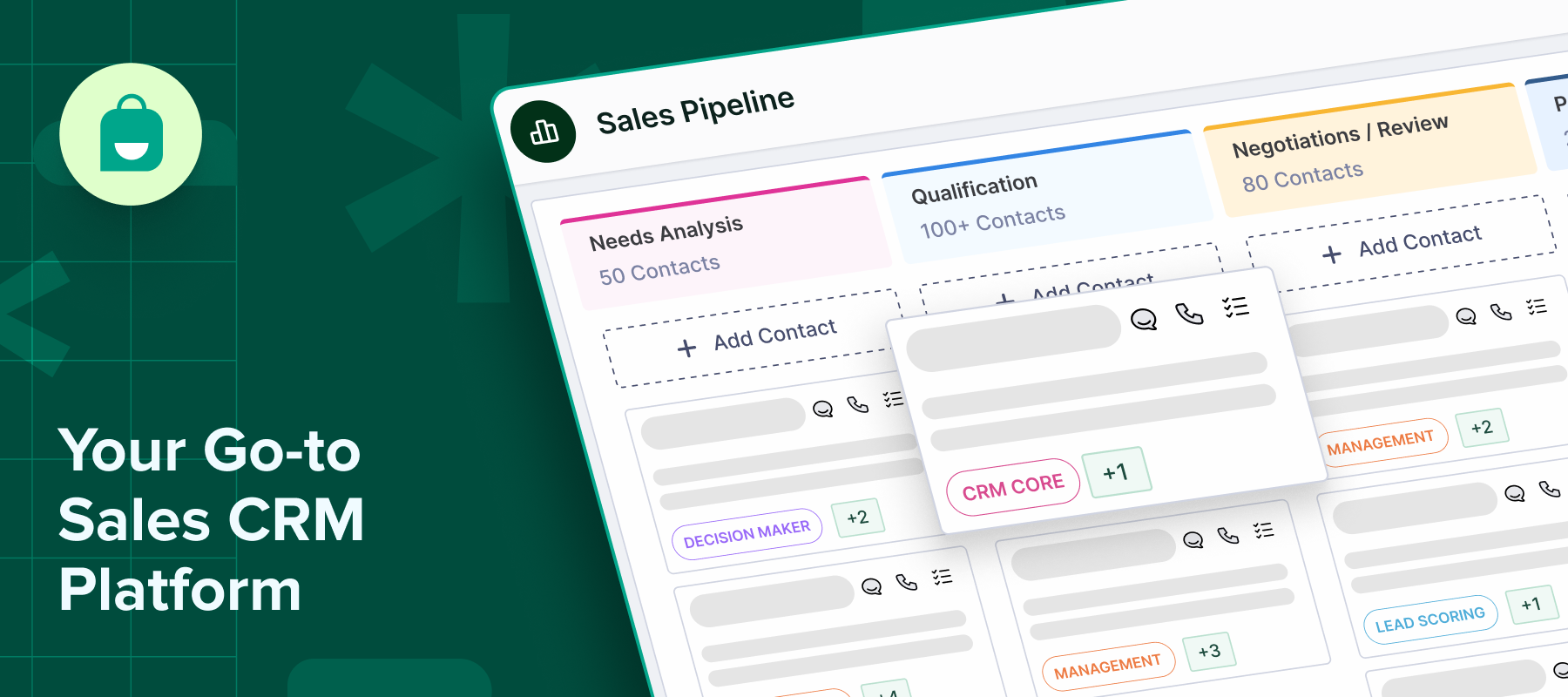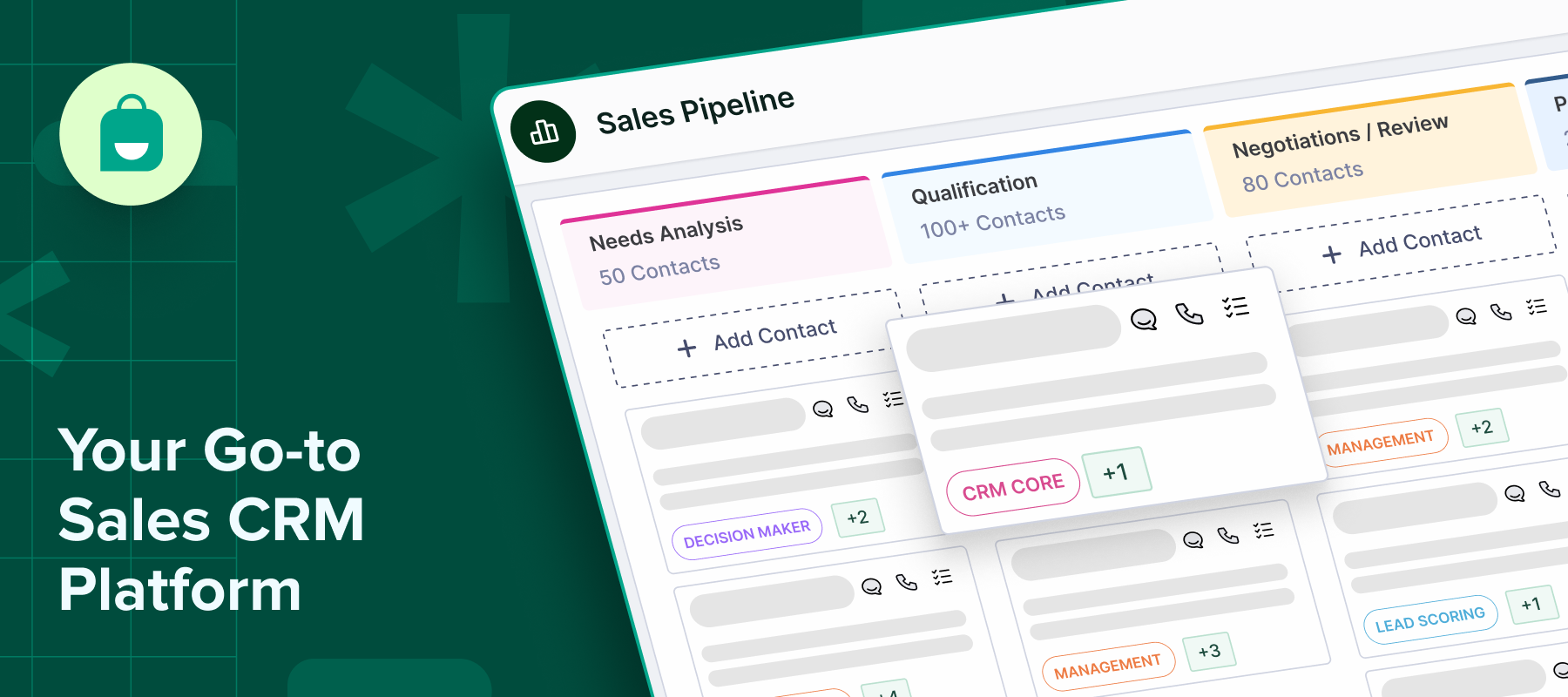Startups and small businesses resort to free sales CRM tools by default.
Free CRM often feels like a no-brainer for them because of tight budgets with growth as the top priority. A software packed with powerful features to make life easy, at zero cost, sounds tempting, but there can be instances when the ‘free’ offer comes with strings attached.
In the business world, free isn’t literal; there is always a price to pay.
While you might not see a price tag when you sign up, there are hidden charges you must be aware of, like feature limits, user caps, data restrictions, and scaling challenges.
This article breaks down what “free” really means when it comes to sales CRMs and helps you spot the potential pitfalls and make smarter, more informed decisions for your business.
Common Hidden Costs in Free CRMs
Here are the hidden prices lurking around free sales CRMs or limitations that can soon turn you into a paying customer:
Limited features and feature lock-ins
Free versions are a great way to get the feel of CRM tools, but they merely touch the surface of features. Sure, you get basic contact management and deal tracking, but the real-deal features like automation, detailed reporting, analytics, or custom workflows sit behind a paywall.
When your sales processes grow, you may need to upgrade sooner than expected because the good features are all locked away.
User and data limits
Secondly, there’s a cap on users as well as data storage. It may limit the number of contacts, emails, or records you can manage, and when your team grows or your pipeline fills up, you will be forced to migrate to avoid losing momentum.
Paid integrations
No tool, including a CRM can work in silos, they need integrations with email platforms, communication tools, and scheduling apps. However, integrations for free CRMs are either unavailable, offered only at higher tiers, or require separate third-party apps with their own costs. If you go ahead with the add-on costs, you may end up paying more than expected.
Lack of support
The biggest drawback of free CRMs is limited or no access to live chat, phone support, or even timely email responses. Should a problem arise, you’re left to troubleshoot issues yourself, which translates to time costs, draining productivity, and potential setbacks.
Data export and migration fees
If you outgrow your free CRM and need to move to a paid or more robust system, you may have a hard time because free versions offer limited data export options. You could face manual data migration, additional service charges, or even the risk of losing customer data in the process.
Training time and productivity loss
The hidden cost here isn’t just money; it’s the productivity loss and disruption that come with working on a limited set of features that lack depth and flexibility, and learning and unlearning systems while switching in the future.
Impact on Business Operations
Here is the impact of hidden costs on your business operations if you choose the wrong CRM version:
Slowed sales processes
Some of the features, like automation, custom workflows, real-time leads tracking, and more, that make sales folks efficient are premium. Without such features, sales folks are left to manually manage follow-ups, task reminders, and lead-nurturing activities, all of which are time-consuming and inefficient.
Inconsistent customer experience
A consistent view of every client interaction across multiple channels adds to a strong customer experience, something that free CRMs lack. With scattered or incomplete customer information, your sales team risks sending redundant messages, missing key context, or responding slowly, leading to weak client relationships.
Operational bottlenecks
Manual tasks that could easily be automated in paid CRM versions become major time sinks in free tools. Things like logging calls, updating deal statuses, sending reminders, and following up on tasks have to be handled one by one, creating operational bottlenecks that can slow your team down.
Delayed insights and poor reporting
Good sales decisions depend on good data, and free CRMs deprive your team of it by providing only basic or delayed reporting features. Without real-time dashboards, forecasting tools, or detailed analytics, sales leaders are left operating on gut instinct instead of concrete insights, and your strategic arm takes a backseat, putting your revenue targets at risk.
Team frustration and low adoption
When a CRM doesn’t meet the daily needs of a sales team, frustration builds quickly. Missing features, clunky workflows, and constant limitations can lead to poor user adoption, or worse, cause teams to abandon the tool altogether.
Case Studies
Let’s hear it from the experts themselves:
Boosting customer engagement for new sales
A fast-growing perfume brand, ISAK, with the right CRM partner, was able to boost its customer engagement by 42%. They are now doubling down on automation capabilities to scale their brand and continue enhancing customer engagement.
Improved cart abandonment and monthly sales
An organic clothing brand, Okhai, found an opportunity with cart abandonment and ramped up real-time sales. After finding a fitting CRM partner, they targeted their daily cart abandonments with conversion tactics, got a 60% reduction, and achieved a 15% increase in month-over-month sales.
Better retention with better insights
A raw material supplier, The Design Cart, turned their communication channel WhatsApp into a powerful sales and retention channel. They leveraged better access to customer insights from their CRM tool to come up with customer engagement and growth tactics, achieving a 30% higher retention rate.
Evaluating Total Cost of Ownership
Here’s how you can put together the direct monetary and indirect costs of free CRM to make the right call:
Direct costs vs. indirect costs
Direct costs, like what you will have to pay for the advanced version, are upfront. It is the hidden costs you need to evaluate, like lost revenue opportunities, missed follow-ups, and reduced team productivity, all of which are hard to quantify but can do more damage. Compare them all to understand which one delivers the greatest value for your business.
Time as a cost
Time is money, and this couldn’t be further from the truth in sales, and free CRMs can burn through both. Having to manually pull all the pieces of the sales activities together and troubleshooting own technical glitches leads to inefficiencies, wasted hours, delayed deals, and slower growth.
Scalability considerations
A tool that meets your sales requirements today may fall short six months down the line when your customer base expands and your sales processes become more complex. A free CRM will do no good for your team if it cannot help scale, plus, you’ll face costly and disruptive migrations later. Choosing a CRM that can evolve with your business avoids these future pain points.
Upgrade path transparency
Not all CRMs are transparent about the hidden costs. They can advertise low-cost upgrades but have strings attached. Before committing to any CRM, it’s important to investigate the full upgrade path, the affordability, pricing tiers, and future expectations. Discovering the prices after you are locked into the system is very frustrating.
Decision Checklist
Here’s a quick checklist of questions that can help guide your decision to choose free or paid CRM:
What do you need today vs. 6–12 months later?
You need to think about your current and anticipate your future needs. A CRM that works for a two-person team today might not fit when you have ten sales reps and a larger client base. Mapping out all your needs in advance will save you the big headache of a costly switch just months down the line.
What features are must-haves now?
Just like every other tool, some features are nice-to-haves, while some are must-haves from day one. Sit with your sales team and find out your deal-breaker CRM features, to ensure the tool doesn’t create bottlenecks or force you into an upgrade sooner than necessary.
What’s the cost of missed sales due to CRM limitations?
CRM limitations can directly translate into lost revenue because they lead to missed follow-up, delayed response, or forgotten leads. Consider similar drawbacks to better weigh if “free” is truly worth it or if investing in a more complete solution will pay off in the long run.
Conclusion
Limited budget, coupled with trying to get your foot across the CRM doors, may seem like a smart move for early-stage businesses.
However, it’s crucial to stay alert to hidden costs and feature limitations that could hamper your operations, slow your growth, or make it difficult for you to migrate as you scale. You have to choose wisely to avoid costly surprises later.
Ready for a CRM that grows with your business?


